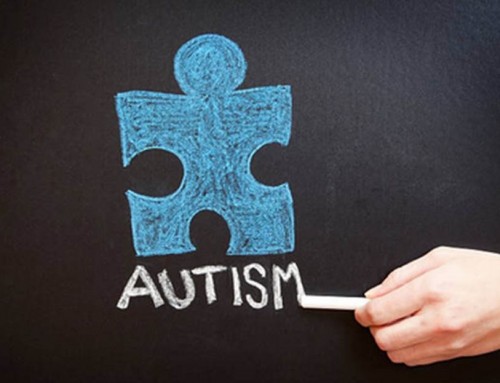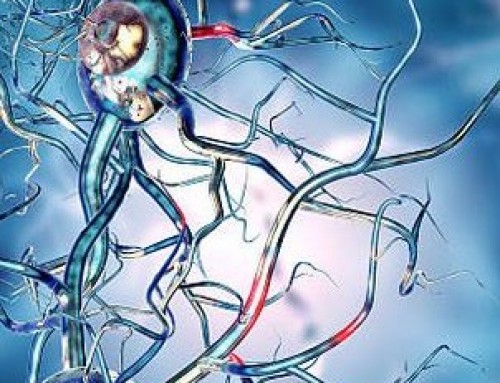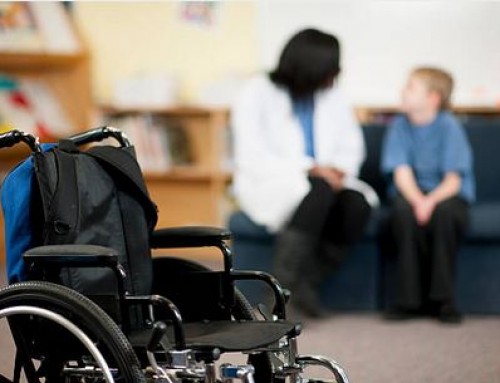A young New Yorker named Henry Lewis “Lou” Gehrig was taking the world by storm in 1920’s and 30’s. Henry was a member of the New York Yankee teams that won six World Series Championships. He was a relentless force on the field and equally dominant when at bat. All of that changed in 1939. It was at that time that Lou Gehrig discovered that he had amyotrophic lateral sclerosis (ALS). In spite of his diagnosis, Gehrig stepped onto Yankee field and addressed a packed stadium. In his farewell, he declared “I consider myself the luckiest man on the face of the earth.” He passed away two years later from the disease.
Amyotrophic Lateral Sclerosis
 A lot less was understood about ALS in the time of Lou Gehrig’s diagnosis. In fact, his prominence as a member of the Yankee’s helped to raise awareness for the disease. It’s in this time that the disease took the moniker of Lou Gehrig’s disease.
A lot less was understood about ALS in the time of Lou Gehrig’s diagnosis. In fact, his prominence as a member of the Yankee’s helped to raise awareness for the disease. It’s in this time that the disease took the moniker of Lou Gehrig’s disease.
ALS is like many other neurodegenerative diseases in that scientists are unclear what causes it. Affected patients experience a continual loss of muscle control as the neurons controlling voluntary muscles die. Patients frequently reach some level of paralysis as the disease progresses. Additionally, patients diagnosed with ALS typically live from 3-5 years from the point where diagnosis is made; however, it is terminal in all patients as no treatment exists to halt its spread. Patients typically die from respiratory failure as diaphragm muscles eventually fail.
Did you know?
- Approximately 20,000 people in the United States have ALS.
- About 6,000 people per year receive the diagnosis.
- Veterans of the military are twice as likely to be diagnosed.
- Treatment options are highly limited. Drugs allow patients to retain functioning capabilities longer in the early stages of ALS; but no drugs can stop it’s progression.
Causes of ALS
Between 5% and 10% of people diagnosed with amyotrophic lateral sclerosis have it as a result of hereditary factors passed from one generation to the next. Researchers have been able to isolate a specific enzyme, superoxide dismutase 1 (SOD1) that may be the culprit in triggering the disease for these people. Unfortunately, over 100 genetic mutations have been identified to date that can create this.
Traumatic head injury has recently been thought as a causative factor in patients being diagnosed with ALS. Lehman discussed in his 2013 study that NFL players may have significantly higher presence of ALS diagnosis as a result of the violent nature of the game. Weir et al published in their research that NFL players are actually five times more likely to develop a neurodegenerative disease than the general US population.
While the causes of amyotrophic lateral sclerosis can include hereditary factors or brain trauma, the last category is far and away the largest. At over 90%, this category represents almost every other person ever diagnosed. For them, there is no identifiable cause, pathogen, or trigger. It just happens.
ALS was first described nearly a century ago in a report produced by Charles Bell. It was fifty years later before the correlation with lateral nerve damage was understood to be the cause of the symptoms exhibited by patients. That was 1874. In the decades since then, researchers are still unclear what causes the disease in most patients.
Current ALS Treatment Options
To date, science has been unable to identify any medical options that may reverse or outright stop amyotrophic lateral sclerosis. As a result, science has focused on identifying treatment options that slow specific symptoms and aid in improving the quality of life for patients.
The drug riluzole (Rilutek) is the only current medication that the FDA has approved for ALS patients. Clinical studies have shown the drug is able to slow progression of degenerative affects in some but not all people.
 Since ALS can come with a host of other complications, personal health providers may likely prescribe other medications to help with symptoms such as fatigue, constipation, pain, or depression.
Since ALS can come with a host of other complications, personal health providers may likely prescribe other medications to help with symptoms such as fatigue, constipation, pain, or depression.
Comprehensive treatment programs will also include various forms of therapy to aid in breathing as well as provide ongoing physical, speech, and occupational therapy to address mobility challenges.
Early testing is also available for people with a family history. These genetic tests look for the mutation seen in hereditary forms of ALS. Most people seeking these tests do so because they have seen the affects the disease has on loved ones and want some level of self-assurance they do not carry an elevated risk. As a result, many facilities that conduct these predictive tests will also require a psychological assessment and / or counseling prior to conducting the predictive test.
Stem Cell Research Advancing ALS Treatment Options
As you can see, treatment options today are highly limited. The focus is more on slowing the progression of the disease and preserving as much quality of life as is possible. For most patients, the result is an extra few months with their loved ones. Only the luckiest patients are able to hold back the neurodegenerative progress for a year or longer.
Something has to change for progress to be made. While adding a few months can be priceless, the real goal is to stop the disease from advancing. This is where scientists have turned to the advances of stem cell research for more innovative solutions to treating the disease and its symptoms. There are too many research studies and clinical trials going on at any given time to name them all. There are, however, a few standout research projects that hold a special promise for the future. Here are their case studies.
Stem Cell Case Study:
Clive Svendsen, PhD, of Cedars-Sinai Medical Center in Los Angeles is one of the most prominent researchers in the field of stem cell ALS research. He has remained on the leading edge of researching neurodegenerative diseases like amyotrophic lateral sclerosis (ALS), Huntington’s disease, Parkinson’s disease using stem cells for the past 25-years.
Svendsen’s current research is a combination of gene therapy and stem cell treatment for ALS patients. Through his research, he has identified that implanted pluripotent stem cells have had limited if any success at integrating with the patient’s existing cells. This revelation has driven Svendsen and his team to use the stem cells instead to produce glial cells (neuroglia). These cells are in turn modified to carry neurotrophic factors that stimulate “motor neuron and corticospinal neuron survival” according to published results. The stem cells are ultimately the delivery mechanism in this implementation.
Svendsen discussed his results at the International Symposium on ALS/MND in December 2015. Here he explained the progress his team has made using animal studies. These preliminary trials have demonstrated an improved quality of life for many of the animals tested as well as a longer lifespan versus control animals. His next stage will be to conduct transplants along the spinal cord of 18 people diagnosed with ALS. This two-year trial is projected to conclude in 2018.
Learn more about the work done by Clive Svendsen’s work in the video below:
The Future of Treatment for ALS
The best prospects for treating ALS in the future may be stem cell therapies. The field is making tremendous noise and is one of the few places where researchers are finding potential solutions to halting the advance of amyotrophic lateral sclerosis in patients. With researchers like Clive Svendsen leading the way, the future is finally starting to show glimmers of hope.
Increased visibility from 2014 Ice Bucket Challenge has also done an outstanding job to expand visibility for this disease. $115 million was raised over an 8-week period. That funding has helped drive further progress and research innovation.
How to Get Involved
If you want to make a difference in the fight to find a cure for ALS, then you’re not alone. The ALS Association outlines how you can make the biggest impact:
 Participate / Advocate / Donate / Save:
Participate / Advocate / Donate / Save:
- Find a ALS local chapter and volunteer.
- Participate in a Walk to Defeat ALS®.
- Join the #ALSIceBucketChallenge!
- Be an advocate.
- Donate to continue the momentum towards drug development.
- If you or someone you know is expecting, consider cord blood storage. You never know how those precious cells may be used!
References
Rowland LP (March 2001). “How amyotrophic lateral sclerosis got its name: the clinical-pathologic genius of Jean-Martin Charcot“. Arch. Neurol. 58 (3): 512–5. doi:10.1001/archneur.58.3.512. PMID 11255459.
Suzuki M, Svendsen CN. “Ex vivo gene therapy using human mesenchymal stem cells to deliver growth factors in the skeletal muscle of a familial ALS rat model.” Methods Mol Biol. 2016;1382:325-336.
Lehman, EJ (2013). “Epidemiology of neurodegeneration in American-style professional football players.” Alzheimer’s research & therapy 5 (4): 34. doi:10.1186/alzrt188. PMC 3978683. PMID 23876143.
Weir DR, Jackson JS, Sonnega A. “National Football League Player Care Foundation: Study of Retired NFL Players.” Ann Arbor, MI: University of Michigan, Institute for Social Research; 2009.





